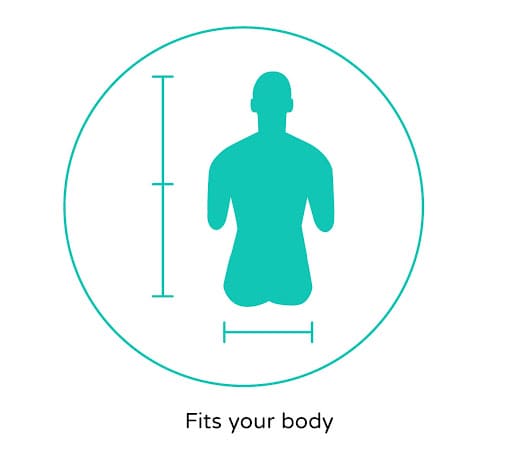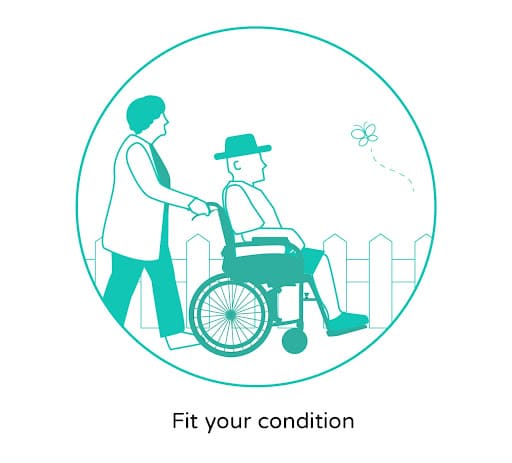A wheelchair that does not fit can increase the chance of secondary injuries caused by long-term wheelchair use. For example, a wheelchair that is unable to help relieve pressure in the lower back or buttocks can cause damage to skin and pressure sores.
The second example of a wheelchair that doesn’t properly fit the user is when the wheelchair is equipped with armrests that are positioned too high. Long-term shrugging can lead to stiff deltoid muscles.
The third example of a poorly fitted wheelchair is when the seat is too wide for the user. This can cause poor sitting posture and spine deformation.
Therefore, it is crucial to keep the notion of “Fit” in mind when choosing a wheelchair.
What factors should be considered when choosing a wheelchair?
Not all wheelchairs are the same. You should choose the most suitable wheelchair for you according to your body requirements and lifestyle.
Fits Your Lifestyle

Your lifestyle could be anything from your living space, how often you travel if you need to transfer in and out of your wheelchair a lot etc. You should also consider whether you intend to use a wheelchair, whether it’s just a temporary aid, or if you need to use it every day. You can also consider if you intend to propel the wheelchair yourself or if you will have a caregiver to push you.
Fits Your Body

- Fit for Pressure Relief: Typically, wheelchair users will use the wheelchair armrest to lift themselves to relieve pressure on the lower back or buttocks. It’s important to consider if you are able to do this in your wheelchair or would you need additional assistance to reposition yourself? If so, then you might consider a wheelchair with a tilt-in-space or reclining function.
- Fit the Size: We usually recommend that the wheelchair seat is approximately 2 inches wider than your hips. When you sit all the way back in your wheelchair, the distance between the front edge of the seat and the back of your knees should be about 2 to 3 inches. The seat depth should be slightly shorter than the upper leg/femur length. Your legs and thighs should be comfortable when the feet are placed on footrests.
Fit Your Condition

Wheelchair users can have a wide range of needs and conditions, long term or short term. The three main categories of wheelchair users are elderly, post-surgery users, and stroke sufferers. Each group has its own set of needs and requirements:
- Elderly: lack of strength and unable to walk.
- Surgery: fractures, joint surgery, rehabilitation etc.
- Stroke sufferers: hemiparesis, paralysis, spinal injury, diabetes, and gout.
In all of these cases, it’s important to talk to a doctor or therapist about your condition as they will help to recommend mobility equipment.
Choose a wheelchair that fits your budget
The last aspect to consider when choosing your wheelchair is your budget. Be clear of what your budget is. Can you get government assistance? Is your wheelchair covered by health insurance? All of these answers will affect what type of wheelchair you will be able to afford.
KARMA has a wide range of wheelchairs covering an extensive variety of needs, from ultra lightweight manual wheelchairs for the elderly to more complex adjustable power chairs for the physically disabled. The SOMA line of wheelchairs (also manufactured by KARMA) also aims to satisfy users with basic wheelchair needs at an affordable price.


